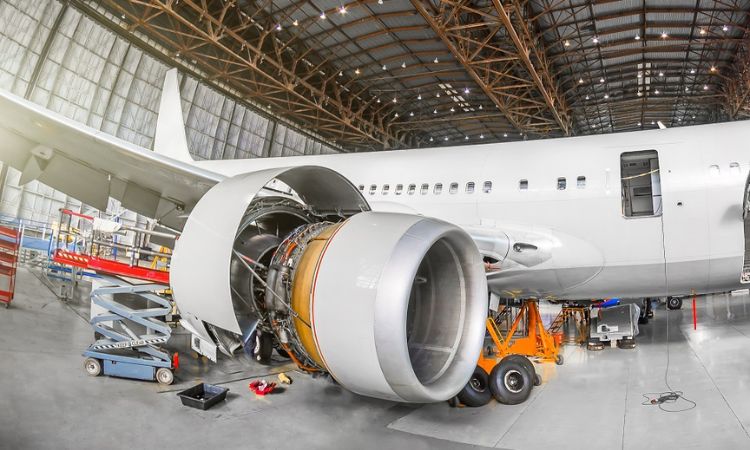India’s defence industry is on a remarkable journey towards self-reliance in defence production, thanks to initiatives like ‘Make in India’ and ‘Atma Nirbhar Bharat Abhiyan’. The goal is to establish India as a key player in the global defence industry by indigenizing defence modernization and exporting cost-effective indigenous equipment and systems. Let’s delve into the evolving landscape of the Indian defence sector, its achievements, and the collaborative efforts driving its growth.

Evolution of the Indian Defence Sector:
From policy reforms in 2001, allowing private participation, to the Defence Procurement Procedure, the Indian defence sector has undergone a significant transformation. It’s all about making things in India, by Indians, and for the world. The focus has shifted towards indigenous design, development, and manufacturing (IDDM) of military equipment, fostering domestic manufacturing capabilities.
Advancing Self-Reliance and Global Recognition:
- Integration in the Global Defence Supply Chain:
The Indian government has taken concrete steps to integrate Indian industries into the global defence supply chain. This approach ensures the sustainability and growth of our industrial ecosystem. With a focus on ease of doing business and indigenous procurements, we’re aligning ourselves with global standards.
- Brand India in Defence Exports:
Our defence and Aerospace industry is making remarkable strides in exporting cutting-edge indigenous equipment and systems to over 85 countries. Recently, we reached an all-time high of ~Rs 16,000 crore in defence exports—a huge win for both the industry and the government. We’re confident that we’ll surpass the target of Rs 35,000 crore set by our Hon’ble Prime Minister for 2025.
- Indigenously Developed Weapons Systems:
We take pride in our indigenous armoured vehicles, supersonic missile Brahmos, air defence system Akash, and 4th gen fighter aircraft LCA Tejas, which have garnered significant interest from friendly foreign nations. These world-class weapon systems have further established India’s reputation as a reliable defence supplier.
Private Sector’s Contribution and Competitiveness:
The Indian private sector has emerged as a strong contender, matching the capabilities and competitiveness of their public sector counterparts in defence equipment design and manufacturing. We’ve witnessed private entities securing contracts for artillery guns and providing life-saving armoured vehicles to UN Peacekeepers. The government’s supportive policies have played a pivotal role in nurturing the industry’s capabilities.
Foreign cooperation and Joint Ventures:
With its enormous development potential, India’s military business has attracted foreign original equipment manufacturers (FOEMs) and foreign governments seeking cooperation with Indian partners. The 48 joint ventures formed by global OEMs and Indian companies demonstrate the legitimacy of our skills as well as the Indian government’s industry-focused policies. Collaborations like this are essential for technical developments and developing a strong worldwide footprint.
SIDM (Society of Indian Defence Manufacturers):
SIDM, the country’s largest aerospace and military industry group, has been instrumental in showcasing Indian industrial skills on a worldwide scale. SIDM has supported export promotion webinars, senior delegations, and supply chain conferences in collaboration with the Ministry of Defence to increase our industry’s exposure and develop into new markets. We are boosting B2B contacts and pushing defence cooperation by developing strong bilateral connections and signing MOUs with international defence organisations.

Legislative Reforms and Growth Initiatives: Growth towards Self Reliance
Over the previous 5-6 years, the government has implemented several legislative measures and launched reforms to increase defence exports. Export procedures have been simplified and made more industry-friendly, with end-to-end online export authorization reducing delays and increasing Ease of Doing Business.
The government has issued three Open General Export Licences (OGEL) for the export of parts and components/technology transfer/major platforms and equipment. The OGEL is a one-time export licence that allows the industry to export defined products to specified locations, as listed in the OGEL, without requesting export authorization while the OGEL is active.
India’s defence exports may be increased by pursuing the following strategies:
- Strengthening the indigenous defence sector: India must assist its domestic defence industry in developing innovative and competitive goods. It may do so through expanding R&D funding, improving manufacturing capacities, and fostering public-private collaborations.
- By creating indigenous technology: To lessen reliance on other nations, India should focus on developing indigenous technologies. This would assist expand defence exports and strengthen the country’s defence self-reliance.
- Streamlining Exports: By establishing a single-window approval mechanism, streamlining the documentation process, and cutting bureaucratic red tape, India could make an attempt to streamline exports. It will be convenient for military industries to export their products as a result of this.
- Market outreach: The defence sector should be expanded by participating in international defence shows, inviting foreign delegations to visit its production facilities, and forming joint partnerships with foreign defence businesses.
- Competitive pricing offer: In order to invite international purchasers, a competitive pricing should be offered for defence items. It can be done by lowering production costs through economies of scale, improving product quality, and providing after-sales assistance.
India can increase its defence exports and become a major global player by executing these measures.

Conclusion:
As our country seeks for self-sufficiency in defence manufacture, the defence sector is undergoing an extremely exciting shift. The sector has embraced the notion of developing its own military equipment entirely, and the results have been very amazing.
It’s encouraging to see the government’s, armed forces’, and private sector’s combined efforts produce fruit, boosting India’s defence industry to new heights. The government is extending India’s worldwide presence by aggressively integrating Indian enterprises in the global defence supply chain, reducing export laws, and boosting international cooperation.
In addition, the country’s commitment to adopting legislative changes and development measures is bearing fruit, opening the door for increased defence exports and self-reliance. With each stride ahead, India is leaving a permanent imprint on both the local and global defence landscapes. The Indian defence sector is on its way to becoming a global power as it continues to grow, export cutting-edge technologies, and build solid alliances. The trip has been difficult, but the future holds enormous promise and opportunity.















